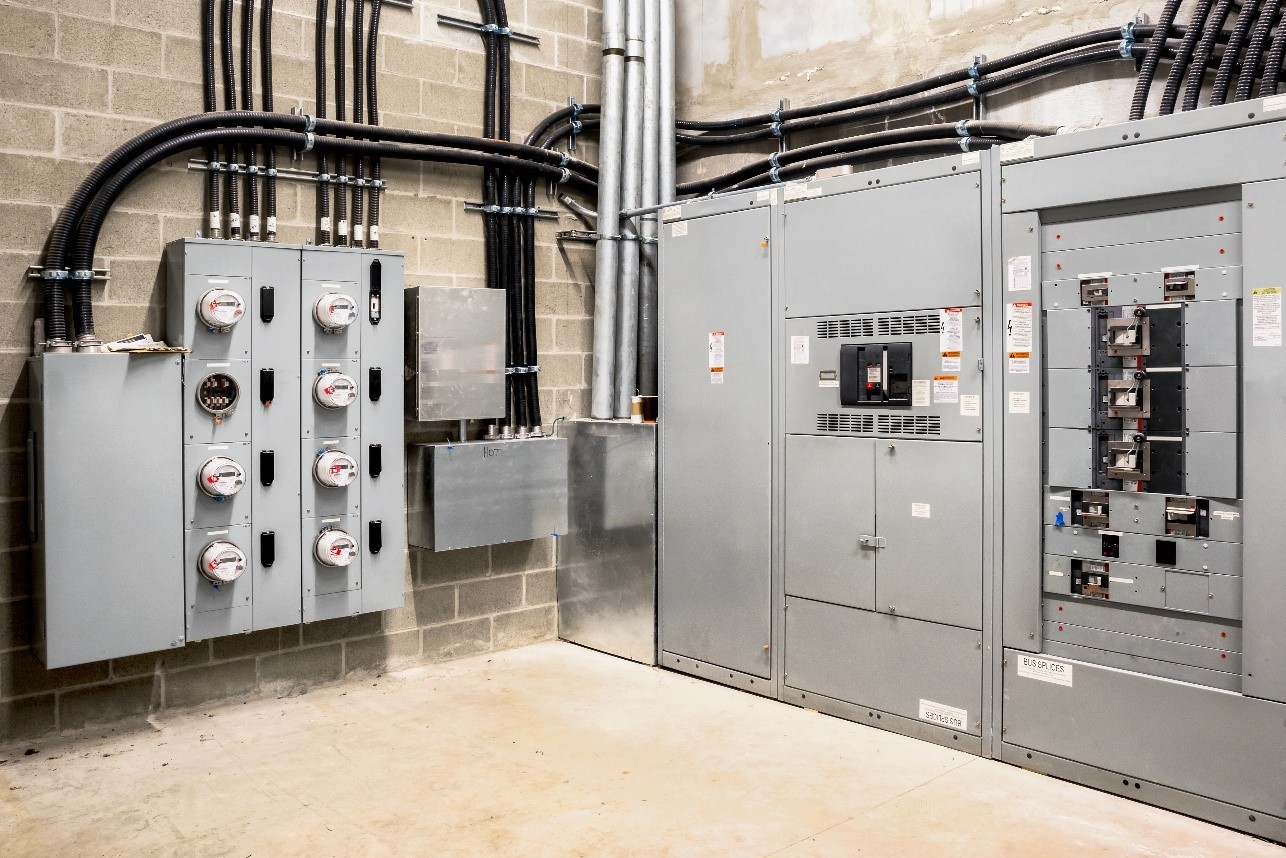Electricity powers nearly everything we do these days, especially in the workplace. If you have an unexpected outage, you might find that your everyday operations can come to a screeching halt. To understand the potential issues that might arise in your electrical system, it’s important to understand how electricity gets to your business in the first place. That’s why we’ve created this guide explaining the basics of electrical power distribution systems.
What is an Electrical Power Distribution System?
Before we can talk about the elements of an electrical power distribution system, we should define the term. Basically, it is the system that delivers electricity from the power plant to the consumer. If an entire section of town loses power at the same time, it typically indicates an issue with the electrical power distribution system. There are lots of different elements in these systems, and a malfunction with any one of them can cause a problem for the entire system.
Feeders
The first aspect of electrical power distribution systems is the feeders. These feeders take the electrical voltage from the substation and carry it to the distributors (more on those in a moment). The electric current can be quite high during this stage, so feeders must be designed to withstand these extreme levels of voltage.
Transformers
You might hear transformers also referred to as “distribution transformers” or “service transformers.” This is where the voltage is reduced to a safe level for distribution to the customers. Without transformers, the voltage would remain too high after traveling through the system to be useful at your business.
Distributors
As the name implies, the distributors supply the electrical current. Current travels through the feeders and continue to the distributors before heading to the customers. The voltage continues to drop as it travels through the distributors, which is vital to ensure that users get the amount of electricity they need both quickly and safely.
Service Mains
The final key element of an electrical power distribution system is the service main. These are small cables that deliver the electrical current to a pole near your workplace. They run from the distributor conductor all the way to your business, providing the power you need to handle your daily operations.
Other Equipment
The major aspects of an electrical power distribution system are covered above, but there are additional minor elements throughout the system. These can include switches, measurement equipment (for keeping track of the current running throughout), protection equipment (designed to prevent electrical malfunctions and protect equipment, linemen and other electrical professionals), and more. All these elements work together to deliver the all-important power you need to continue your daily operations.
Classification
Electrical power distribution systems can be categorized in several different ways. First and perhaps most commonly, you can classify distribution systems by the nature of their transmission, whether AC (alternative current) or DC (direct current). These days, it’s more likely that you’ll be using an AC system, as it tends to be simpler and more cost-effective than DC systems.
You can also classify distribution systems based on how they are connected. These options can include radial systems, ring main systems, and interconnected systems. Radial systems are the simplest, using separate feeders to carry electric current from a single substation to the distributors at one designated end. Ring main systems form a loop circuit, making the system more reliable than radial systems (since there is more than one entry point). Finally, interconnected systems have two or more sources that energize the feeder ring. This service is even more reliable and efficient thanks to the multiple entry points.
Requirements
Now that you know all the major elements of a distribution system, what makes a good one? The requirements may be seemingly simple, but they can have a huge impact on the overall operation of the system. The best distribution systems will excel in their voltage capacity, the availability of power when consumers need it most, and the overall reliability.
A distribution system needs to carry the lowest voltage levels possible to maintain efficiency and safety. The voltage levels might change as the load on the system changes, so the system needs to account for these shifts. Too much voltage can cause electrical failures, while too little voltage is inefficient and costly.
Since electrical energy can’t be stored, the distribution system must be able to provide power to the customer on demand, any time of the day or night. The electric company won’t be alerted every time a consumer needs power, so the system must accommodate. That’s why it’s important for the staff to study usage patterns and predict large load changes that could impact the system.
Finally, distribution systems must be reliable. While electric power can never be completely guaranteed, it must be as reliable as possible to serve the community around the clock. After all, electricity is vital for almost every aspect of business these days, not to mention our everyday activities outside of work. Distribution systems can be made even more effective by using an interconnected system, adding extra reserve facilities, and utilizing a high-quality automatic control system.
Working with MTA
To ensure your workplace can get the power it needs, it’s important to work with experienced electrical engineers who know the ins and outs of powering businesses. That’s where we come in. MTA is proud to serve customers throughout Los Angeles, San Diego, and the West Coast. Our team works every day to help businesses ensure they can get their power safely and efficiently.
MTA offers a wide range of electrical services such as arc flash analyses, electrical testing, power system analyses, and more. To learn more about how MTA can help your business make the most of its electrical system, contact our team today!

